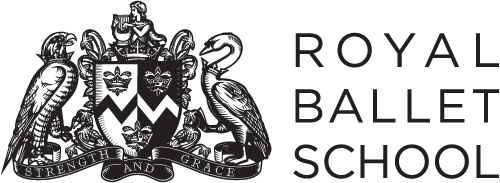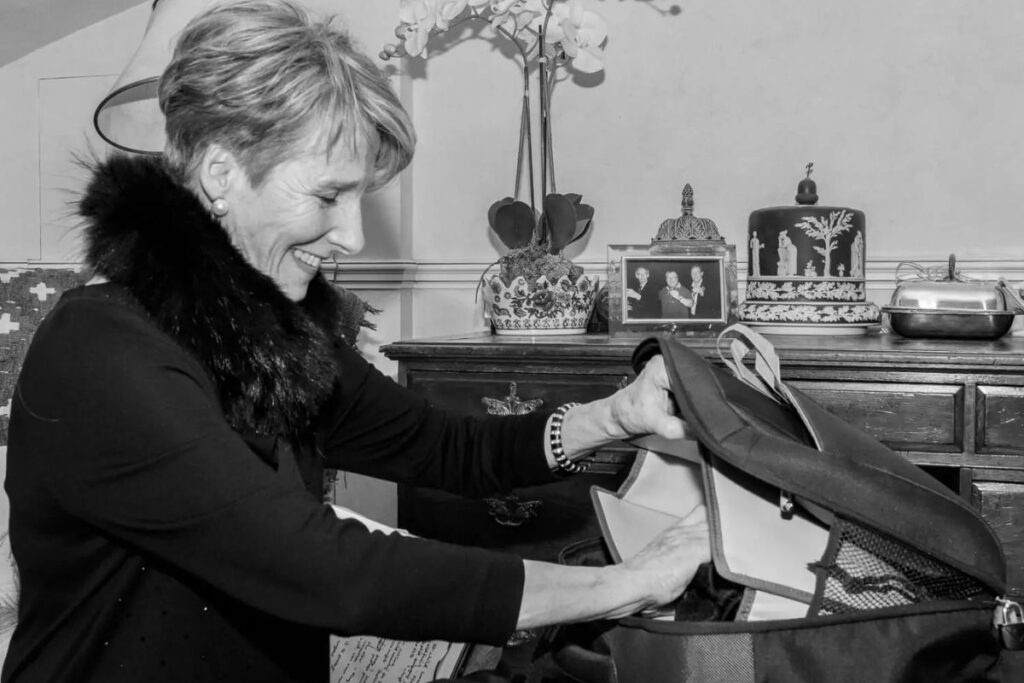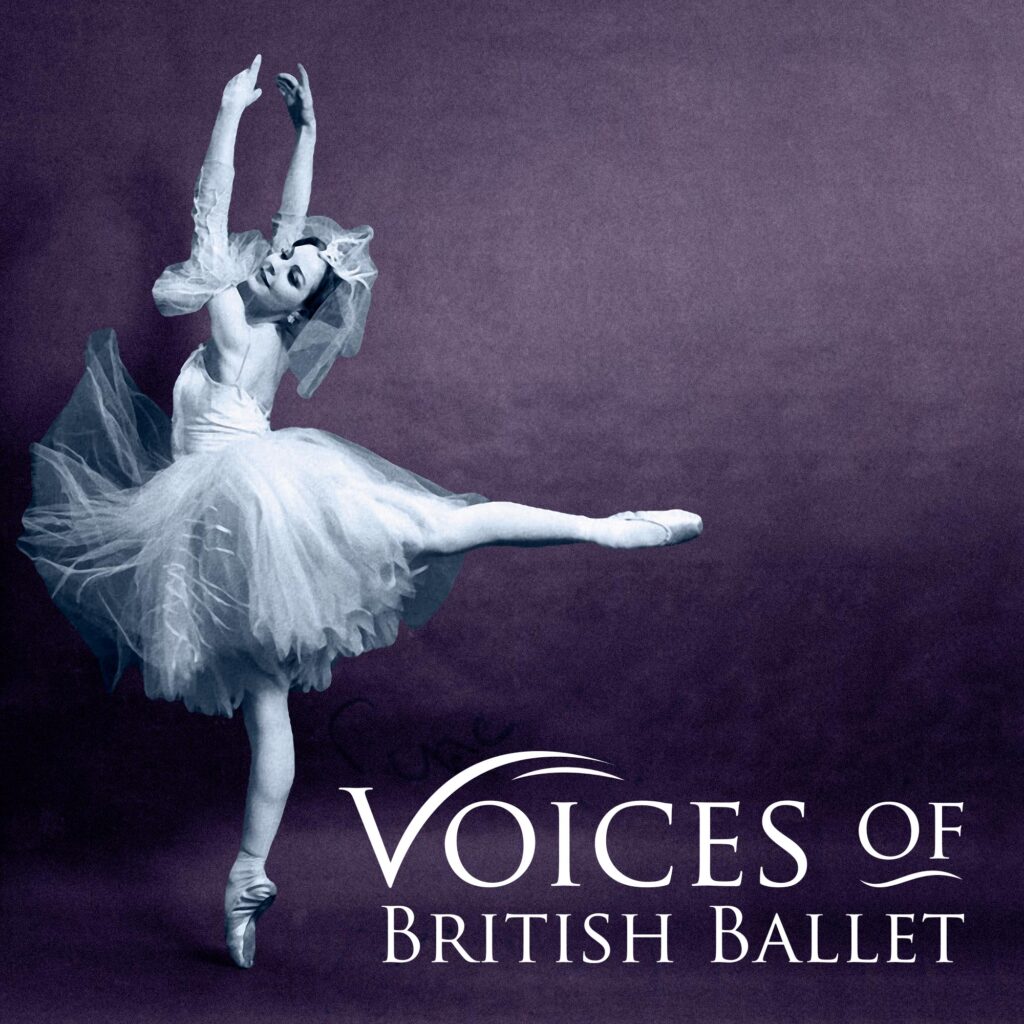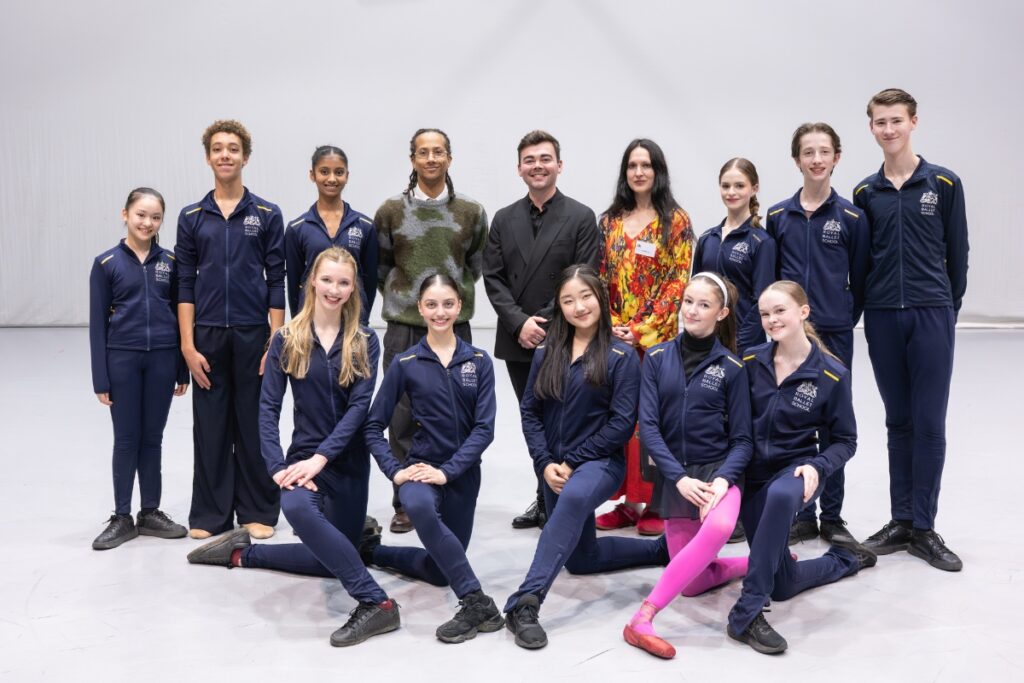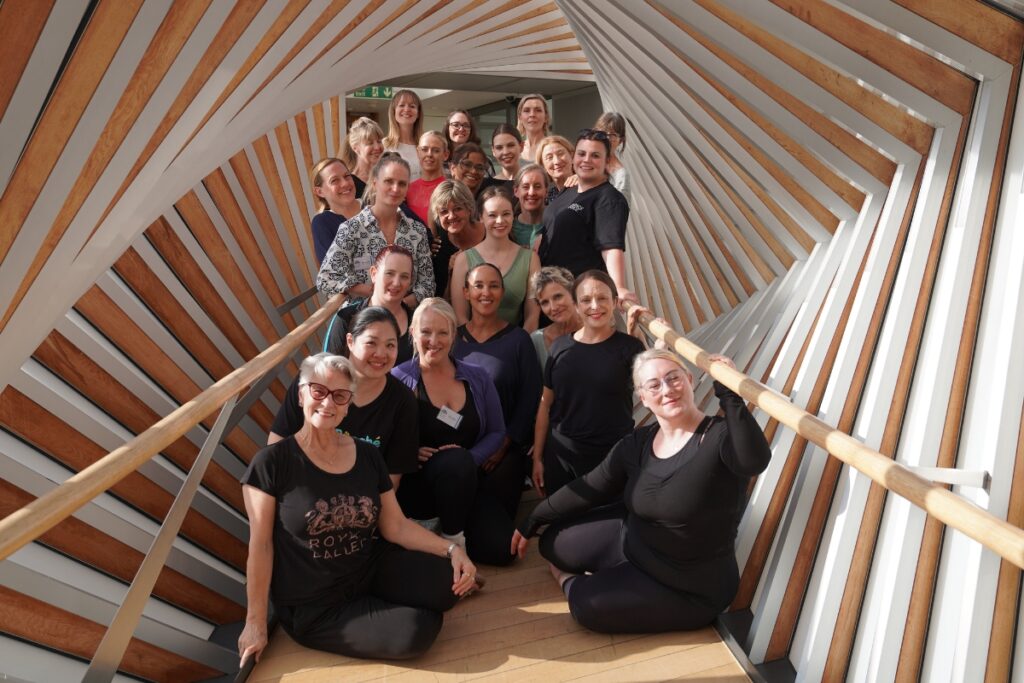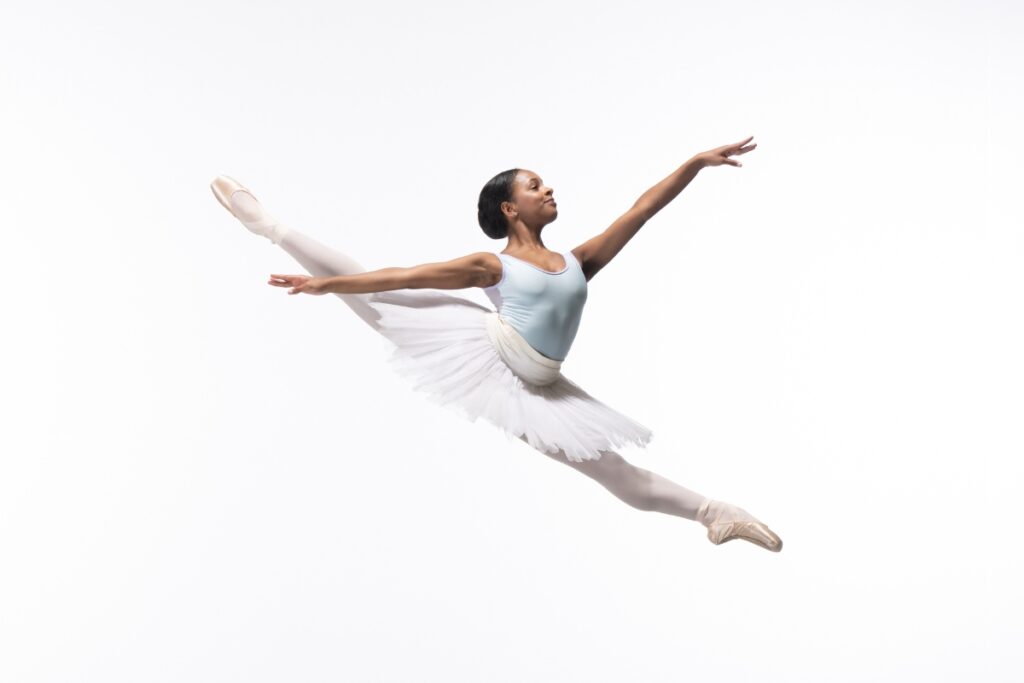School alumna and former teacher Patricia Linton launches Voices of British Ballet podcast
We are thrilled to celebrate the launch of Voices of British Ballet, an oral history project founded by Royal Ballet School alumna and former teacher, Patricia Linton.
Patricia has built a remarkable collection of over 500 interviews and discussions which build a historically significant picture of the voices and stories who shaped British ballet in the 20th century and beyond.
Now, in collaboration with award-winning audio producer, Natalie Steed, Voices of British Ballet has launched a weekly podcast which brings some of the highlights of these stories to listeners and includes special introductions to set these stories in context.
We caught up with Patricia earlier this year to find out more about her former life as a dancer and what lead her to create Voices of British Ballet.
When did you begin dancing and what was your journey to The Royal Ballet School?
My first performance was at school when I was five, and I knew then that this was what I wanted to do. We were dancing the story of a Teddy Bear’s Picnic. In the rehearsals we had mimed eating, but for some reason for the performance we were given real buns! Absolute chaos ensued as the whole thing stopped whilst 20 hungry children tucked into their feast!
I read about The Royal Ballet School in the Dancing Times and studied their audition advertisements avidly. It took a while to persuade my parents, especially as I was one of four children, but I eventually joined White Lodge in September 1959.
Can you tell us about some memorable moments from your time as a student at the School?
There were many! But the most formative and influential was my chance to dance the peasant pas de deux from Giselle, at the King’s Lynn Festival. It was one of the first performances of Ballet for All – a brilliant idea of Peter Brinson’s and Barbara Fewster. It was really the forerunner of the many outreach programmes that exist today. I was very lucky to be involved, and the chance made all the difference.
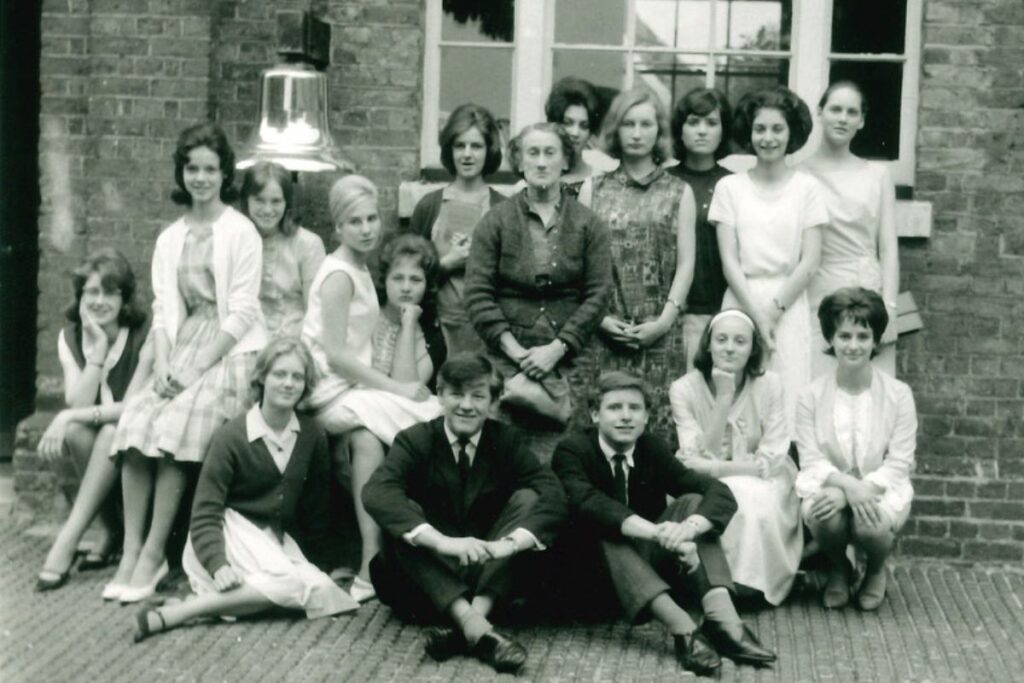
You joined The Royal Ballet in 1964. What was that experience like and what were some of your favourite ballets to perform?
Well, all these years later, I still can’t quite believe how lucky I was. The Company was absolutely full of the most wonderful dancers, so many and so varied. It was also the time of remarkable partnerships. Kenneth MacMillan was in the middle of creating his version of Romeo and Juliet, a production that is as invigorating and mesmerising today, as it was 60 years ago! All the principals worked separately from the corps de ballet during the ballet’s creation, so we had no idea what was happening. I vividly remember (I can still feel the goosebumps) the full calls in the Covent Garden studio and all the Romeos and Juliets were revealed: Lynn Seymour and Christopher Gable, Anthony Dowell and Antoinette Sibley, Merle Park and Donald Macleary and of course Fonteyn and Nureyev. How lucky was I to be there to see it?
What lead you to create Voices of British Ballet?
I think I was prompted to do something when I realised from The Royal Ballet School archives that although there was a huge amount of historical material, there was no oral history. I thought it would be a good idea to catch the ‘voices’ of some of the older dancers and teachers before it was too late. Also, I was amazed by how little I knew of the birth of ballet in 20th century Britain and how it had been brought to life by people from all over the world.
You have collated an enormous collection of recordings and interviews. Tell us about the process and how you decided who to interview?
Like most things it is a mixture of both luck and planning. Luck first with meeting people and listening to their suggestions and then planning and organising visits and times and so on. At first it was often people I knew, my teachers and dancers from the early times. Later people would contact me to say if you haven’t interviewed so-and-so, you must! It was Mary Clarke, editor of the Dancing Times, who put me in touch with Monica Ratcliffe – one of our first podcast subjects and a member of Ninette De Valois’ school from 1926!
You travelled to South Africa and New Zealand to record some of the interviews. Have there been any special moments over the past 20 years whilst you were recording this archive?
I had the Churchill Travelling Scholarship, a marvellous opportunity, and applications open to all from ages 18 onwards. I wanted to go to Australia, New Zealand and South Africa, because so many dancers from these parts of the world contributed hugely to the success of not just The Royal Ballet, but many other ballet and dance companies. They often travelled against the odds – six weeks on a boat – with no idea of how they would fare upon arrival. However, we couldn’t have reached the heights we did without them! There are too many wonderful moments, but it was particularly wonderful to meet up with Vyvyan Lorrayne in Johannesburg. She and Anthony Dowell and Robert Mead created Frederick Ashton’s Monotones in 1965. As gracious as ever, she was as full of love and joy for ballet as she had been 50 years before. Among many others, we also interviewed Johaar Mosaval. A performance of Johaar’s, when he was a young man, intriguingly inspired the surgeon Christian Barnard to pioneer heart transplants. Later, a long career with The Royal Ballet included dancing 310 performances as Jasper in Pineapple Poll!
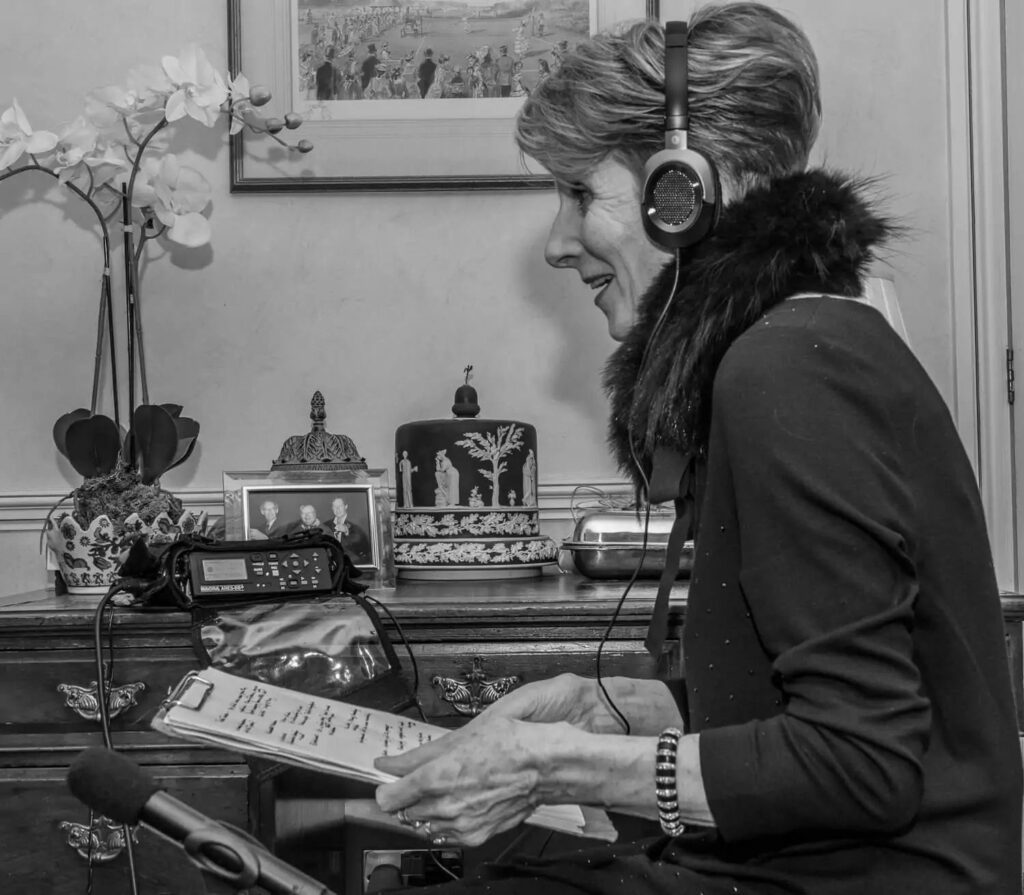
Having collated all these recordings, was there anything surprising you found out that you didn’t know before?
I think I am most surprised at how few regrets people have had in pursuing a dancing life, especially those who had very short careers for various reasons. Many grateful memories about the camaraderie and, interestingly, the dependability of dancers once they have embarked on other careers. Something to do with the work ethic and always being on time for class! Apart from this general impression, many little or even unknown historical details have emerged in the recordings. Over and above this, we have underlined the significance in their time of now little-known companies from the 1940s and 1950s, including International Ballet and St James’ Ballet, the latter a brainchild of The Arts Council.
In your view, what makes British ballet distinct from other forms?
It is often said that we have a particular love of storytelling. Our dancers’ enjoyment of choreographing and involvement, both in schools and in companies, comes, I am sure, from our extraordinary succession of choreographers from De Valois onwards. This is certainly not only reflected in The Royal Ballet, but in many other companies both past and present. It is a genuine wide appreciation of choreography and what it can do and say.
You will have documented great change in the ballet industry through your recordings, can you pinpoint any moments that have had the greatest impact and brought about the biggest changes?
Since the turn of the century, ballet has been dominated by new choreographers with different approaches to the old traditions. De Valois, Ashton and MacMillan all had a new take in their time. Latterly we have seen, among many others, Christopher Wheeldon, Wayne McGregor and Crystal Pite, building on the past and taking their own different directions.
Is there anyone you didn’t get the opportunity to interview that you would like to?
Loads! At one time I lived quite near Dame Ninette de Valois, and I often used to drive her home from the Royal Opera House or from a visit to White Lodge. She was always brilliant, appreciative and funny and absolutely to the heart of any matter. I visited her with Pamela May in the late 1990s and Pamela was talking about tutus and high legs and De Valois said ‘oh don’t worry Pamela, you can’t ask them to bring their legs down after all these years of asking them to put them up! The audience will decide in the end. They won’t like the asymmetry!’ We never formally interviewed de Valois, but we did interview Pamela May!
If you had to choose one person from the history of British ballet as the person you find the most inspiring, who would it be and why?
An impossible question! But for endless reasons, it must be Margot Fonteyn. Not just because she was the muse of Ashton and creating some of the greatest ballets, but her intelligence and graciousness, kindness and compassion, never wanting to take the limelight when she was the limelight. She understood human nature because she had been through so much both on and off stage and knew each one of us had hopes and fears, loves and tragedies. It was a privilege to dance with her leading the Company.
Aside from the podcast, the Voices of British Ballet website has a timeline and Grace Notes from different experts giving context to the changes in British ballet. Have you had any interest from museums or galleries to use your materials for an exhibition?
We launched on 25 March and have had an exciting reception. The goal now is to let as many ballet lovers and students as possible know about it. We’d love to partner with museums and galleries to open up our archive. I love that we have captured people’s voices. You feel so close to the people and stories of those responsible in so many ways for creating and developing British ballet. And there will be many more voices yet to add and capture!
